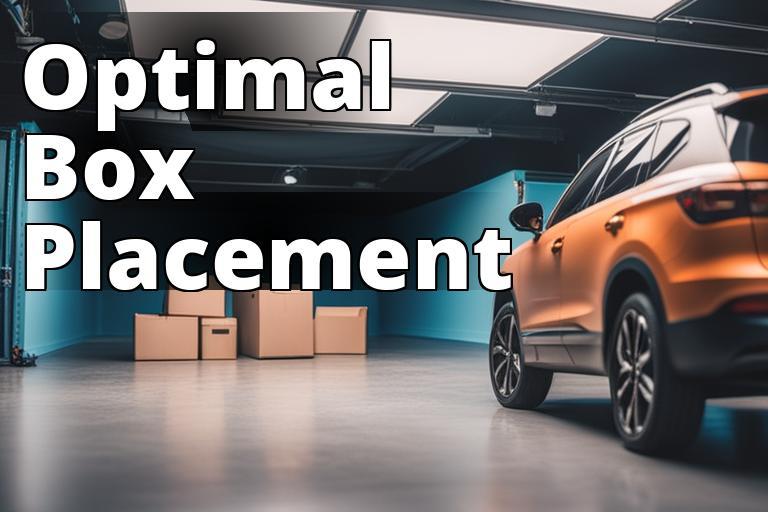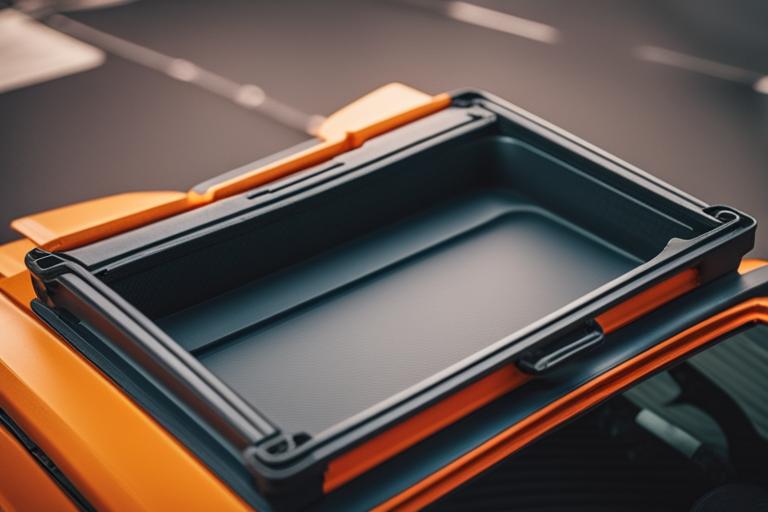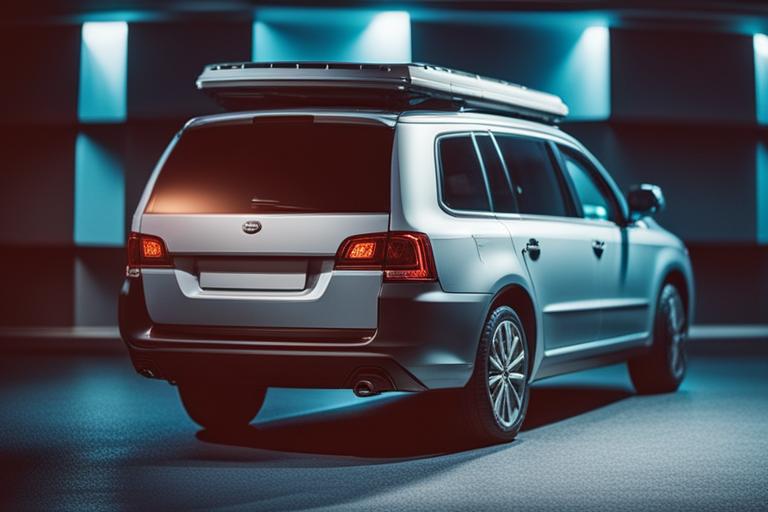
Are you planning a family road trip or an outdoor adventure that requires extra storage space? A roof cargo box is an excellent solution to maximize your vehicle’s storage capacity while keeping your belongings secure. However, it’s essential to install and position your roof cargo box correctly to ensure your safety and the safety of others on the road. In this article, we will provide you with tips and guidelines on where to position your roof cargo box for safe travel.
Top Tips for Secure Travel with a Roof Cargo Box: Where to Position it for Maximum Safety
By reading this article, you will learn:
– The different types of roof cargo boxes and roof rack systems available
– The importance of choosing the right position for your roof cargo box for maximum safety
– Step-by-step instructions for installing and maintaining your roof cargo box

Types of Roof Cargo Boxes and Roof Rack Systems
Before positioning your roof cargo box, it’s crucial to understand the different types available. There are two main types of roof cargo boxes: hard-shell cargo boxes and soft-shell cargo bags. Hard-shell cargo boxes are durable and provide excellent protection for your belongings, but can be heavy and difficult to install. Soft-shell cargo bags are lighter and easier to store, but may not provide as much protection against the elements.
In addition to the type of cargo box, the roof rack system is also a crucial factor. There are two main types of roof rack systems: factory-installed and aftermarket. Factory-installed roof racks are designed specifically for your vehicle, making installation easy and secure. Aftermarket roof racks can be customized to fit your vehicle and cargo box, but may require more time and effort to install.
Consider the size and weight of your belongings, the type of vehicle you have, and the roof rack system you plan to use when choosing a roof cargo box.
Importance of Choosing the Right Position
The position of your roof cargo box can significantly impact your vehicle’s aerodynamics and safety. Improper positioning can increase wind resistance and even cause the cargo box to detach from the roof while driving, posing a serious safety risk to you and other drivers on the road.

Positions for Roof Cargo Boxes
There are three main positions for roof cargo boxes: center, forward, and rear. Each position has its benefits and drawbacks, and the ideal position will depend on your specific needs.
Center Position
The center position is the most common and provides the most balance for your vehicle. Placing the cargo box in the center of the roof rack distributes the weight evenly and reduces wind resistance, making it easier to drive at high speeds. However, the center position may obstruct the driver’s view and limit access to the trunk or rear hatch.
To install a roof cargo box in the center position, ensure that it is centered on the roof rack and securely fastened with the appropriate brackets and straps.
Forward Position
The forward position is a good option for those who need easy access to the cargo box while driving. Placing the cargo box in the front of the roof rack allows for easy loading and unloading, but may increase wind resistance and affect fuel efficiency.
To install a roof cargo box in the forward position, position it in front of the front crossbar and ensure that it is securely fastened with the appropriate brackets and straps.
Rear Position
The rear position is a good option for those who need maximum access to the trunk or rear hatch. Placing the cargo box in the back of the roof rack allows for easy access to the trunk, but may increase wind resistance and affect fuel efficiency.
To install a roof cargo box in the rear position, position it behind the rear crossbar and ensure that it is securely fastened with the appropriate brackets and straps.
Consider the size and weight of your belongings, the type of vehicle you have, and the roof rack system you plan to use when choosing a position for your roof cargo box. Always follow the manufacturer’s instructions for installation.
Installation Tips
Proper installation of your roof cargo box is crucial for your safety and the safety of others on the road. Follow these steps to ensure that your cargo box is securely attached to the vehicle:
- Place the cargo box on the roof rack and center it in the desired position.
- Secure the cargo box to the roof rack with the appropriate brackets and straps.
- Double-check the installation to ensure that the cargo box is securely attached and will not shift during transportation.
- Check the position of the cargo box to ensure that it is not obstructing the driver’s view or access to the trunk or rear hatch.

Safety Considerations
Using a roof cargo box can pose safety risks if not done properly. To ensure your safety and the safety of others, follow these tips:
- Secure the cargo inside the box to prevent it from shifting during transportation.
- Use additional straps or tie-downs to secure the cargo box and prevent it from opening while driving.
- Drive safely with a roof cargo box attached to the vehicle, such as reducing speed and avoiding sudden maneuvers.
Maintenance and Storage Tips
Proper maintenance and storage of your roof cargo box can extend its lifespan and ensure that it functions correctly. Follow these tips:
- Clean the cargo box regularly with a soft cloth and mild soap.
- Store the cargo box in a dry and secure location when not in use.
- Avoid storing heavy items inside the cargo box when it is not on the roof rack.
Personal Experience: Choosing the Wrong Position for my Roof Cargo Box
Last summer, I decided to take a road trip with my family and brought along a roof cargo box to store our luggage and camping gear. We had never used a roof cargo box before and didn’t know much about the different positions available.
Without doing any research, we decided to install the box in the rear position, thinking it would be the easiest and most convenient spot. However, we quickly realized that this was a mistake.
As we drove down the highway, we noticed that the car was much harder to control and the steering felt loose. We also heard a lot of wind noise and noticed that the gas mileage had decreased significantly.
After doing some research and consulting with a professional, we learned that the rear position is not ideal for most vehicles. It can create drag and affect the car’s stability, especially at high speeds.
We ended up repositioning the roof cargo box to the center position, which was much safer and more comfortable to drive with. We also learned the importance of doing research and choosing the right position for our specific vehicle, rather than assuming that any position will work.
This experience taught us a valuable lesson about the importance of proper installation and choosing the right position for a roof cargo box. We now feel much more confident and safe when using a roof cargo box for our travels.
Conclusion
Choosing the right position for your roof cargo box is crucial for your safety and the safety of others on the road. Consider the type of cargo box, roof rack system, and weight and size of your belongings when choosing a position. Follow the manufacturer’s instructions for installation and always double-check the installation and position before hitting the road. Remember to secure the cargo inside the box and drive safely with a roof cargo box attached to the vehicle. Proper maintenance and storage can extend the life of your cargo box and ensure that it functions correctly.
| Position | Pros | Cons |
|---|---|---|
| Center | – Distributes weight evenly – Reduces wind resistance – Easy to drive at high speeds |
– May obstruct driver’s view – Limits access to trunk/rear hatch |
| Forward | – Easy access to cargo box – Easy loading/unloading |
– Increases wind resistance – Affects fuel efficiency |
| Rear | – Maximum access to trunk/rear hatch – Easy loading/unloading |
– Increases wind resistance – Affects fuel efficiency |
Q & A
Who can benefit from using a roof cargo box?
Anyone looking to maximize their vehicle’s storage space for travel.
What should I consider when positioning my roof cargo box?
The weight distribution, clearance for opening, and wind resistance.
How do I ensure the roof cargo box is securely attached?
Follow the manufacturer’s instructions and use appropriate straps or locks.
What if my vehicle doesn’t have a roof rack?
Look for roof cargo boxes that come with their own rack or use a universal fit kit.
How can I prevent damage to my roof or cargo box?
Avoid overloading the box and driving under low clearance obstacles.
What if I’m not confident in my ability to install a roof cargo box?
Seek the help of a professional installer or a knowledgeable friend.








